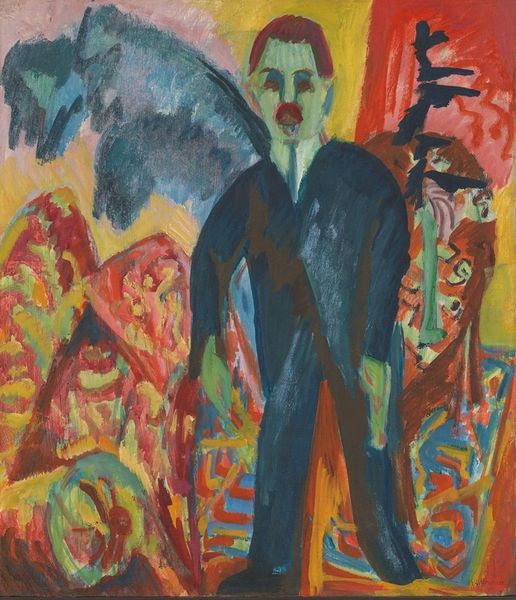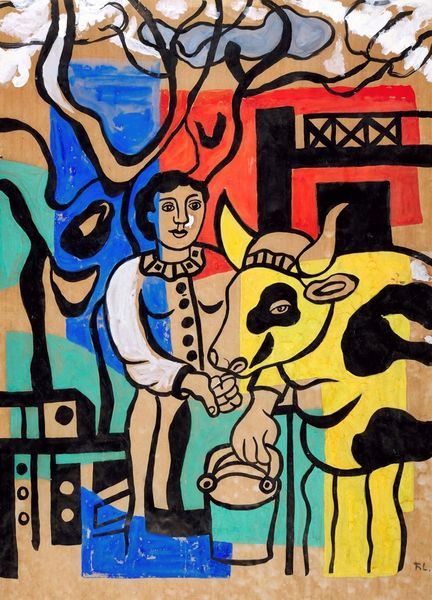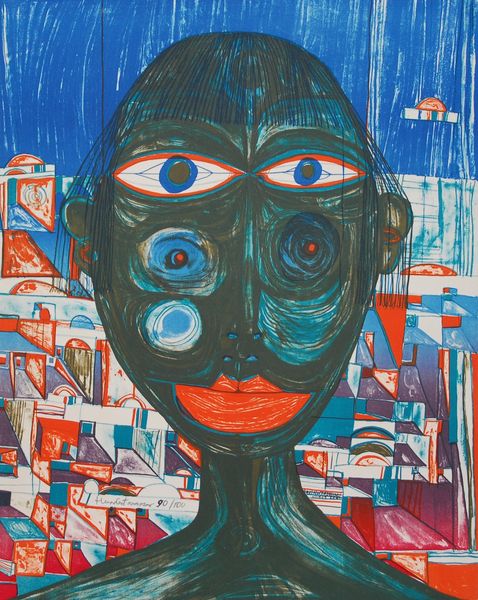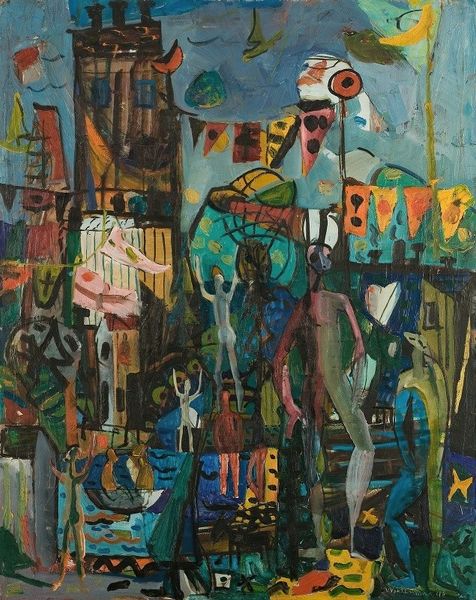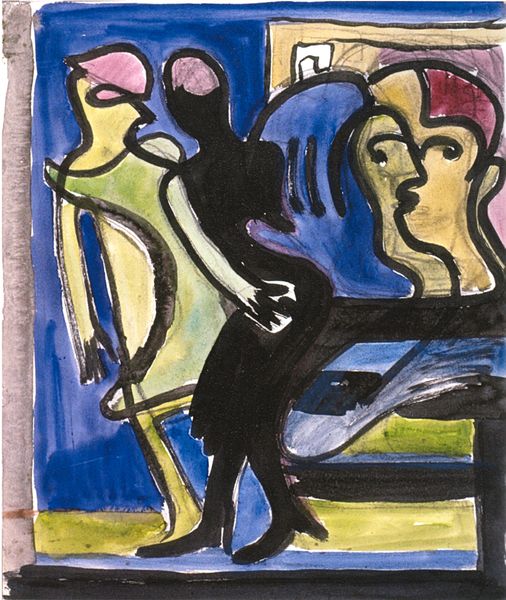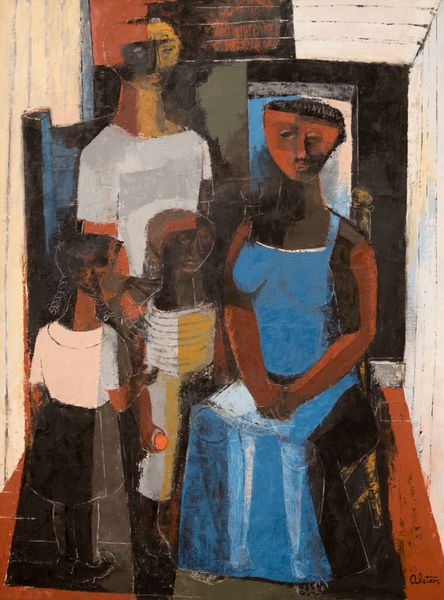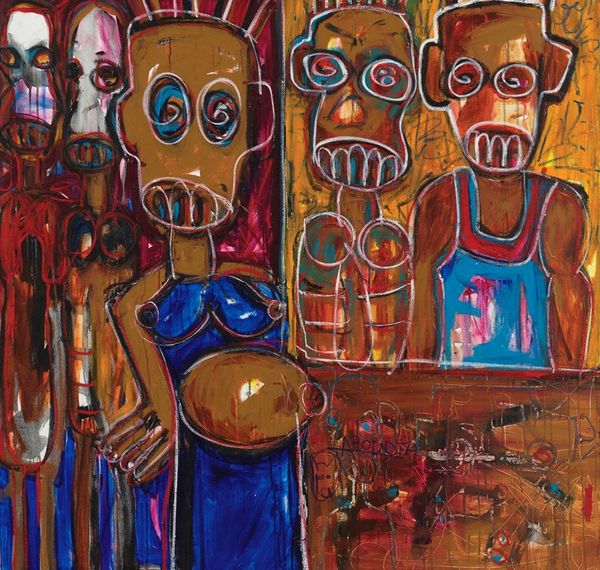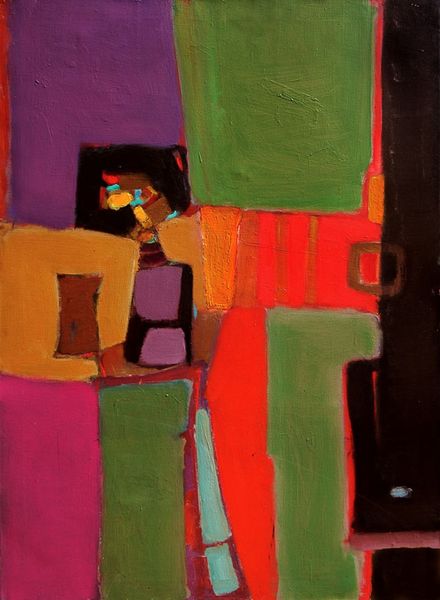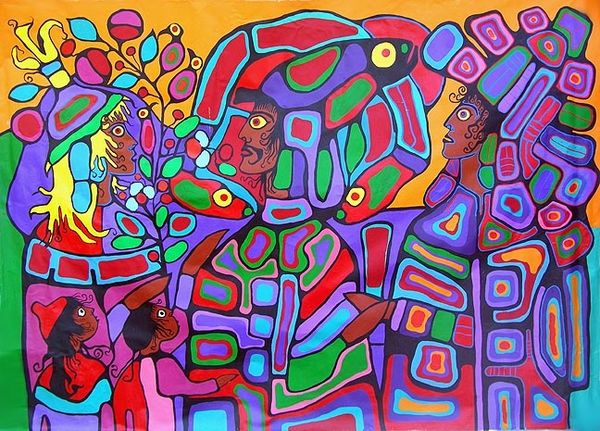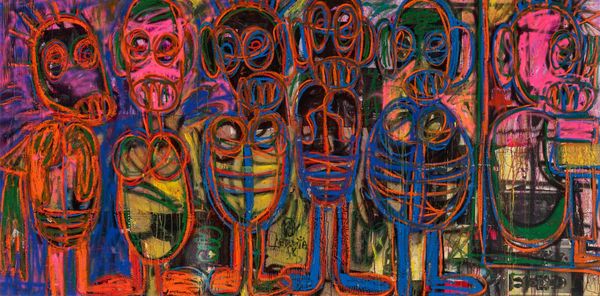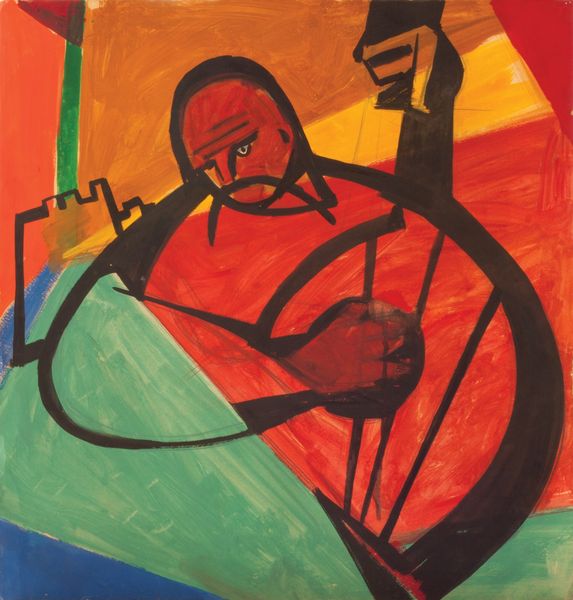
Copyright: Rufino Tamayo,Fair Use
Editor: We're looking at "The Troubadour," a 1945 painting by Rufino Tamayo. It's incredibly striking, with these flattened figures and bold colors. What do you see in this piece, beyond just the surface? Curator: The most captivating element for me is the mask-like quality of the troubadour's face. Consider the cultural memory embedded within masks – how they transform identity and connect us to archetypal figures. Tamayo is, in a sense, invoking the ritualistic origins of performance itself. It goes beyond a simple portrait; it speaks to a deeper, more primal connection to music and storytelling. Editor: So the fragmentation isn't just abstract, it’s suggesting something about the role of the musician? Curator: Precisely! And the colors—the blues, reds, and ochres—they're not merely decorative. Think of them as emotional cues, evoking passion, longing, and perhaps even a hint of melancholy. The troubadour, historically, was a transmitter of stories, often tales of love and loss. Tamayo uses color and form to suggest those underlying emotions. Notice how the other figures are faceless, too? What do you make of that? Editor: Perhaps that they represent a collective feeling, like the emotion is communal. They’re absorbed in the troubadour’s tale, or maybe they are a part of the tale, becoming archetypes themselves. Curator: Excellent point. They are more than mere audience members, they are active participants. The mural-like scale speaks to a larger than life effect. Tamayo understood how to transform a single figure into an entire world of feeling and cultural resonance. Editor: I’ve definitely learned a great deal by viewing it this way. Curator: As have I.
Comments
No comments
Be the first to comment and join the conversation on the ultimate creative platform.
